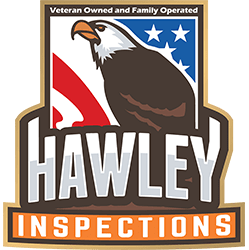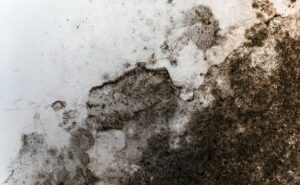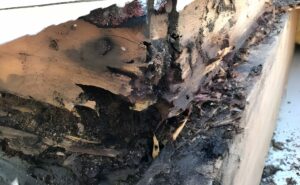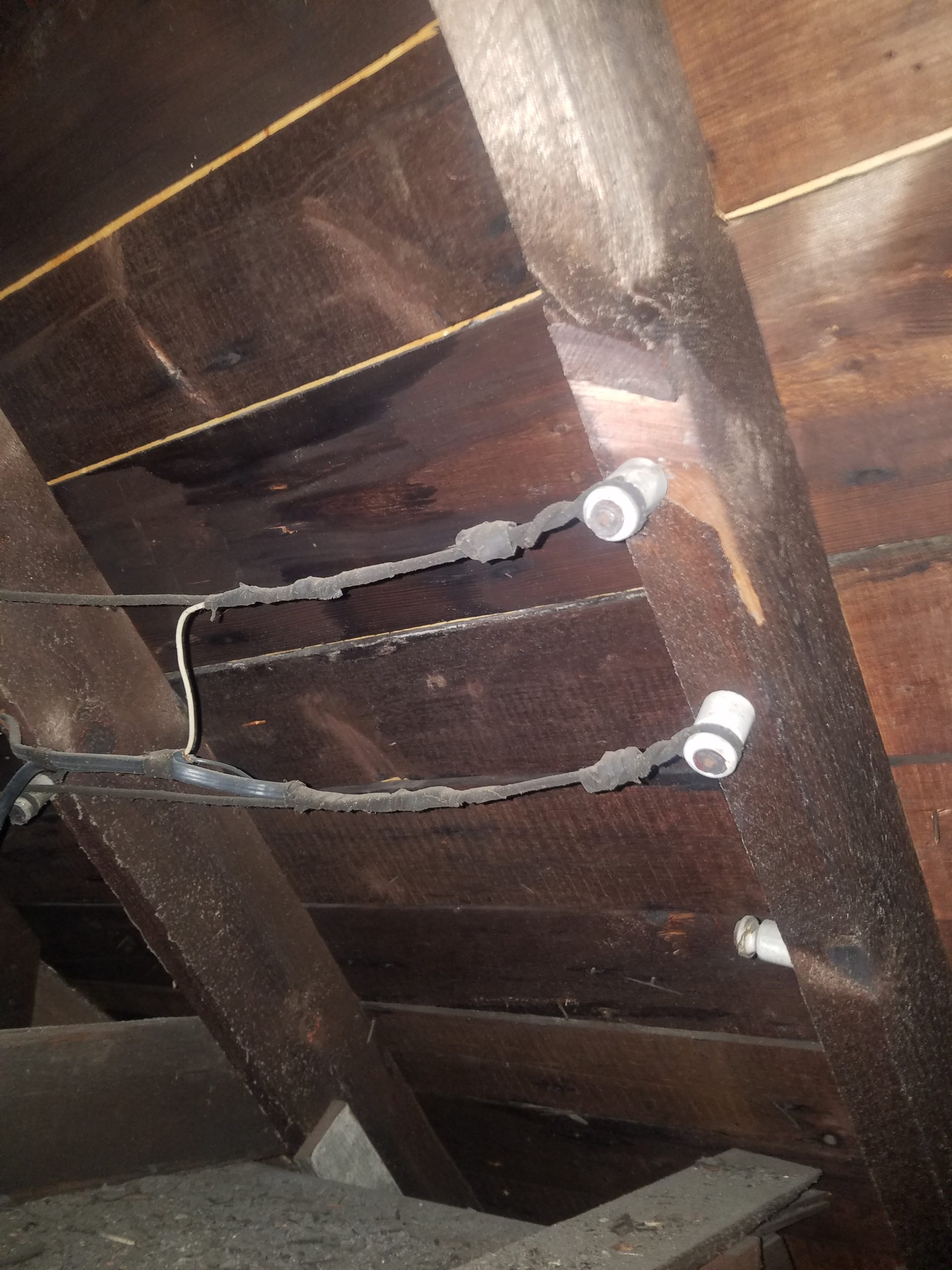
Knob and Tube Wiring problems – January 15, 2015
Knob and tube wiring was used from the 1880s until the late 1940s. If your house was built before 1950 there is a good chance it will contain Knob and Tube (K&T) wiring. K & T wiring was almost always installed by a professional electrician.
K & T wiring was considered very efficient and safe. However as
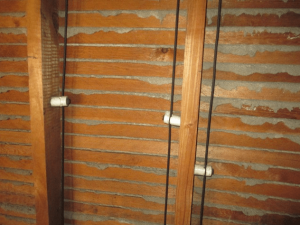
electrical demands increased, knob and tube wiring was phased out and replaced with modern products.
There are a number of reasons it is no longer used :
- High labor costs were the primary reason it was discontinued
- High material costs also contributed to its downfall
- The introduction of Romex wiring allowed nonprofessionals to install electrical wiring with relative ease
- Many insurance companies will not insure homes with knob and tube wiring because it has been identified as the cause of many home fires
Now let’s examine the reasons it is no longer allowed by the National Electrical Code (NEC)
- Modern construction practices include insulating wall and ceiling cavities and K&T must be in the open air and cannot be covered by insulation
- Because it was readily accessible unsafe splices were often made
- The original wire insulation often deteriorates and exposes the wire presenting a fire hazard
- Rodents seem to like chewing on the old-style insulation presenting a fire hazard
- No ground wire is included in the circuit making it unsafe for use in kitchens, bathrooms, laundry rooms, basements, garages, outdoors and anywhere else a grounded circuit is required
- Neutral wires were often broken at switches instead of the hot wire thus leaving the circuit energized and presenting a safety hazard
- All K&T wiring is a minimum of 60 years old and much of it has deteriorated or been compromised
- There are safer easier to install products readily available
How can I tell if I have Knob and Tube Wiring
If your home was built after 1960 you are probably safe. Older homes are usually easy to inspect if the basement ceiling and attic floors are open and the joists are visible.
Attic floors may have K&T nailed to the top of the ceiling joist or it may have been placed between the joists. Walls and ceilings cannot be insulated if K&T is installed.
A quick visual inspection should tell you if you need to have an expert inspect further.
K&T is either nailed using porcelain insulators as shown immediately above or.
K&T wiring is often improperly spliced Or if drilled as in the attic view it will have porcelain sleeves. Joints were soldered and tapped providing a solid splice. Nonprofessional splices are common because the wiring is easily accessed and these tap-in splices are often fire hazards.
If K &T wiring is found in your home it is not normally a reason to panic. You should however have it inspected by a qualified electrician and replaced or repaired as needed.
some material for this post may have come from the following sites:
- http://www.oldhouseweb.com/how-to-advice/knob-and-tube-wiring.html
- http://en.wikipedia.org/wiki/Knob_and_tube_wiring
- http://www.nachi.org/knob-and-tube.htm
- https://www.hawleyhomeinspectionsllc.com
For information about our warranties
Warranty
Check us out at the Better Business Bureau
